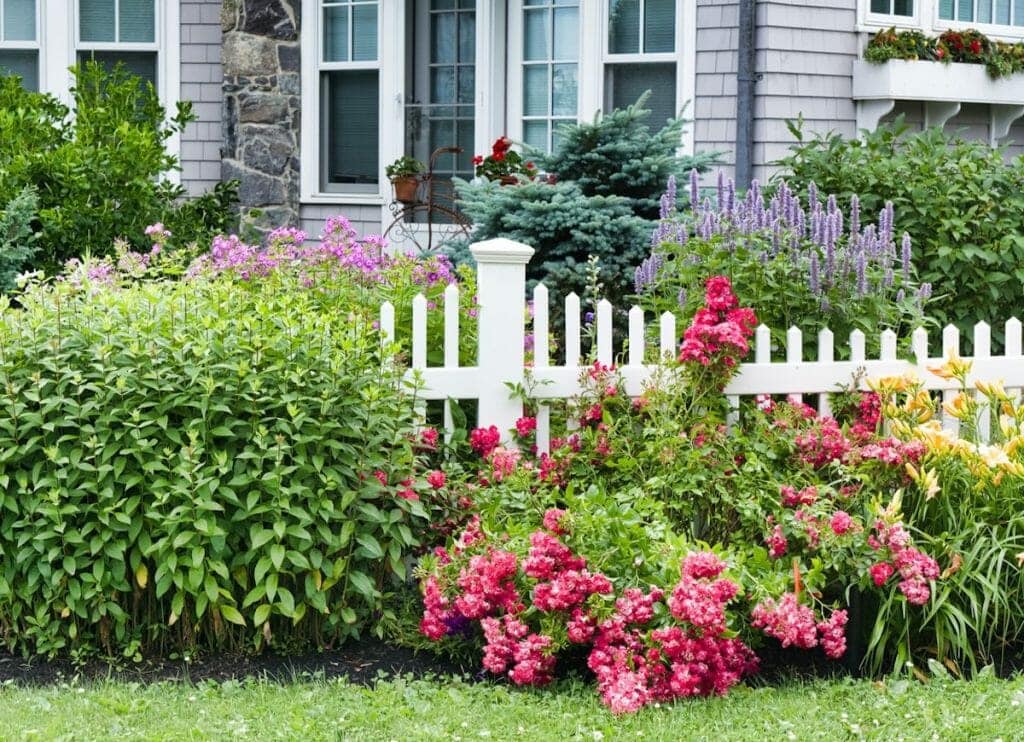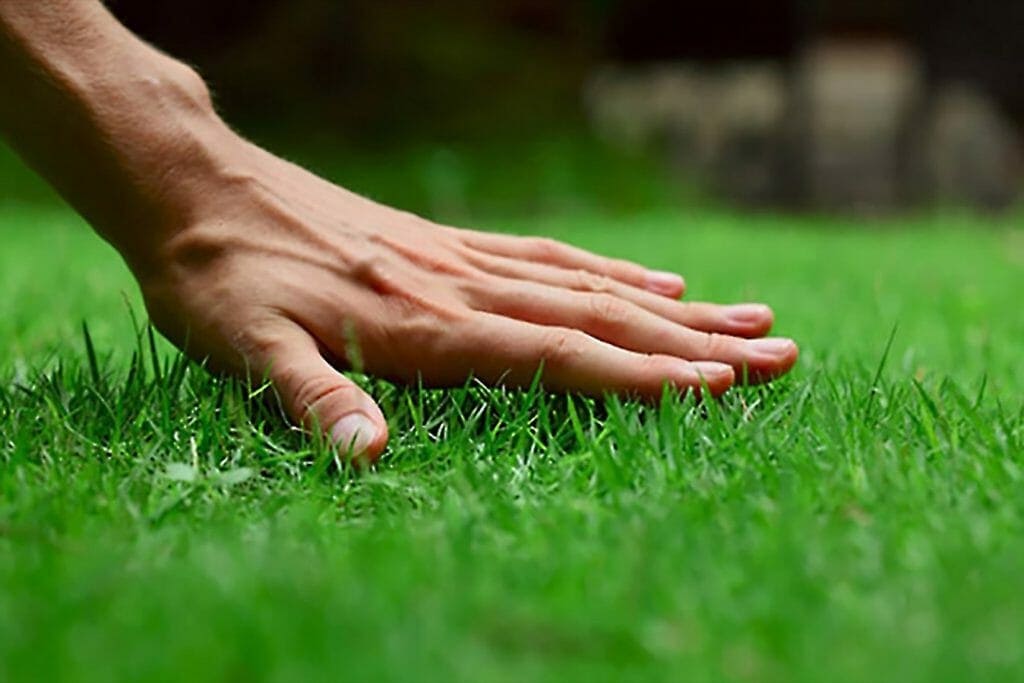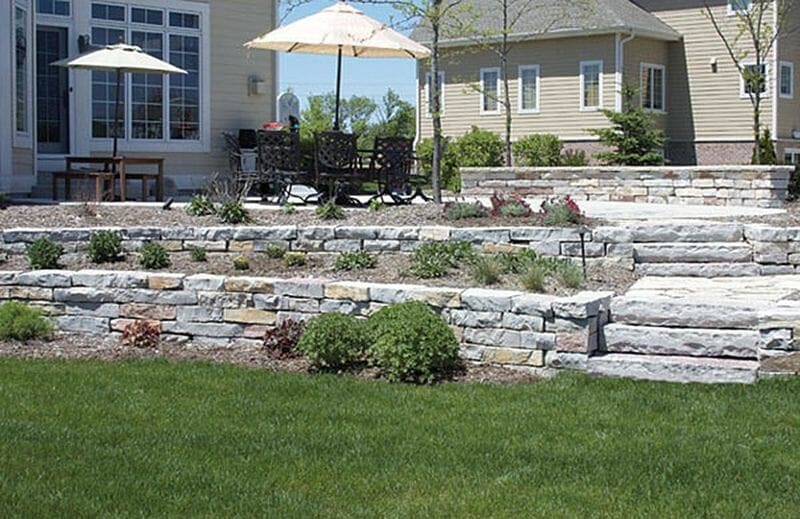Written by David Beaulieu and published on https://www.thespruce.com/.
I’ve always called any low-maintenance, high-impact plant a “plant that pays the rent.” To me, that means a plant that earns its keep in the garden by reliably contributing year-round interest. If a plant looks good for only two or three weeks, I don’t use it. As a result, I have come to rely more and more on shrubs—especially these eight—as the main players in my borders. Every gardener wants a garden that is easy to take care of, and shrubs provide long-term impact without all the work of perennials. In fact, you could use just these plants in a border and have an interesting, beautiful planting all year long.
Best Ornamental Shrubs for Your Yard
Wow-Factor Divas, Steady Workhorses, and Shrubs With Great Timing
For a bush to qualify as one of the best ornamental shrubs, it must meet one of the following three criteria:
- It offers multi-seasonal interest.
- It has one feature that’s so breathtaking that it can get away with being a one-trick pony.
- It blooms at a time of year when many other shrubs have finished blooming, meaning it’s helpful for sequence-of-bloom planning and achieving more consistent color in the yard.
To narrow down your plant selection choices further, take into account factors such as favorite flower colors or leaf colors, maintenance needs, and a bush’s ability to attract wildlife to your property. Your goal should be to have at least one bush in the yard that excites you every season of the year.
- 01 of 12 Tree Peonies
:max_bytes(150000):strip_icc():format(webp)/tree-peony-reddish-big-5ba43da7c9e77c00504cada8.jpg) Josie Elias / Getty Images You may not notice much difference at first between tree peony (Paeonia suffruticosa) and its better-known, perennial relative (P. lactiflora), but what makes the former a shrub is that it has woody stems that stick around for the winter. But this fact doesn’t make it a multi-seasonal star (the stems aren’t showy enough for that): It’s all about the spring flowers with this plant. Suited to zones 4 to 8 (full sun to dappled shade), the bush has blooms as showy as any you’ll find in Northern landscapes. It can get as large as five feet tall and wide.
Josie Elias / Getty Images You may not notice much difference at first between tree peony (Paeonia suffruticosa) and its better-known, perennial relative (P. lactiflora), but what makes the former a shrub is that it has woody stems that stick around for the winter. But this fact doesn’t make it a multi-seasonal star (the stems aren’t showy enough for that): It’s all about the spring flowers with this plant. Suited to zones 4 to 8 (full sun to dappled shade), the bush has blooms as showy as any you’ll find in Northern landscapes. It can get as large as five feet tall and wide. - 02 of 12 Holly
:max_bytes(150000):strip_icc():format(webp)/variegated-holly-closeup-big-5ba4329446e0fb0025e90431.jpg) Dragan Todorovic / Getty Images As an evergreen, holly (Ilex) automatically meets the requirement of affording multi-seasonal interest. But this storied shrub doesn’t stop there. Some of the English types (I. aquifolium) have variegated leaves, although they are cold-hardy only as far north as zone 6. Holly’s berries add color to the fall and winter landscapes. These berries also feed some of the wild birds that come to your yard, such as blue jays. An excellent producer of bright red berries is Blue Princess (I. x meserveae ‘Blue Princess’). It has a maximum 15-foot height and 10-foot width. Grow it in zones 5 to 8, in full sun to partial shade.
Dragan Todorovic / Getty Images As an evergreen, holly (Ilex) automatically meets the requirement of affording multi-seasonal interest. But this storied shrub doesn’t stop there. Some of the English types (I. aquifolium) have variegated leaves, although they are cold-hardy only as far north as zone 6. Holly’s berries add color to the fall and winter landscapes. These berries also feed some of the wild birds that come to your yard, such as blue jays. An excellent producer of bright red berries is Blue Princess (I. x meserveae ‘Blue Princess’). It has a maximum 15-foot height and 10-foot width. Grow it in zones 5 to 8, in full sun to partial shade. - 03 of 12 Stewartstonian Azalea
:max_bytes(150000):strip_icc():format(webp)/stewartstonian-azalea-fall--58aefda53df78c345b381b39.jpg) David Beaulieu Nominees for best ornamental shrub that flowers in April or early May are numerous. A case can be made for Forsythia, with its yellow flowers as welcoming as the spring sun. But many feel azaleas rule the roost at this time of year. Even if you feel this way, it can be difficult to decide on a type of azalea to grow because there are so many available. Rhododendron x Gable ‘Stewartstonian’ (zones 5 to 8, partial shade, 4 to 5 feet tall and wide) may well help you make up your mind if you’re a lover of fall foliage: Its leaves turn a fabulous red in fall. This early-to-mid-spring bloomer also boasts red flowers.
David Beaulieu Nominees for best ornamental shrub that flowers in April or early May are numerous. A case can be made for Forsythia, with its yellow flowers as welcoming as the spring sun. But many feel azaleas rule the roost at this time of year. Even if you feel this way, it can be difficult to decide on a type of azalea to grow because there are so many available. Rhododendron x Gable ‘Stewartstonian’ (zones 5 to 8, partial shade, 4 to 5 feet tall and wide) may well help you make up your mind if you’re a lover of fall foliage: Its leaves turn a fabulous red in fall. This early-to-mid-spring bloomer also boasts red flowers. - 04 of 12 Gold Mound Spirea
:max_bytes(150000):strip_icc():format(webp)/goldmound-spirea-fall-big-57caf7915f9b5829f4002cbe.jpg) David Beaulieu Like Stewartstonian azalea, Gold Mound spirea (Spiraea japonica ‘Gold Mound’) offers interest across multiple seasons. This shrub for zones 4 to 8 bears bright golden leaves in spring and brilliant yellow leaves with a pink tinge in fall. You will pick other shrubs over this one for spring flowers or for fall foliage, but this one is among the best for spring foliage. As a bonus, it does have pink flowers, too in spring. It grows in a mound-like habit and becomes 2 to 3 feet tall and 3 to 4 feet wide. Grow it in full sun to achieve the best color.
David Beaulieu Like Stewartstonian azalea, Gold Mound spirea (Spiraea japonica ‘Gold Mound’) offers interest across multiple seasons. This shrub for zones 4 to 8 bears bright golden leaves in spring and brilliant yellow leaves with a pink tinge in fall. You will pick other shrubs over this one for spring flowers or for fall foliage, but this one is among the best for spring foliage. As a bonus, it does have pink flowers, too in spring. It grows in a mound-like habit and becomes 2 to 3 feet tall and 3 to 4 feet wide. Grow it in full sun to achieve the best color. - 05 of 12 Rose of Sharon
:max_bytes(150000):strip_icc():format(webp)/Blue-Chiffon-rose-of-sharon-big-56a586563df78cf77288b19f.jpg) David Beaulieu Hibiscus syriacus earns a spot on the list because it blooms at the right time: It is invaluable as a shrub that blooms in late summer when the floral color in your landscaping is starting to run out of steam. This timeliness is much more impressive than its appearance, and the shrub does not offer multi-seasonal interest. ‘Blue Chiffon,’ with its lavender-blue flowers, is a commonly-grown type. This full-sun plant reaches 8 to 12 feet in height (with a narrower spread) and is best grown in zones 5 to 8.
David Beaulieu Hibiscus syriacus earns a spot on the list because it blooms at the right time: It is invaluable as a shrub that blooms in late summer when the floral color in your landscaping is starting to run out of steam. This timeliness is much more impressive than its appearance, and the shrub does not offer multi-seasonal interest. ‘Blue Chiffon,’ with its lavender-blue flowers, is a commonly-grown type. This full-sun plant reaches 8 to 12 feet in height (with a narrower spread) and is best grown in zones 5 to 8. - 06 of 12 Oakleaf Hydrangea
:max_bytes(150000):strip_icc():format(webp)/oakleaf-hydrangea-autumn-big-59286ba05f9b58595045b777.jpg) Cora Niele / Getty Images Slow and steady wins the race in the case of this workhorse of the landscape for zones 5 to 9. It doesn’t necessarily wow you at any particular time of the year, but it gives you a reason to come out into the yard and admire it all four seasons of the year. The ‘Ruby Slippers’ cultivar is compact at 3 to 4 feet tall and wide. It’s an early-summer bloomer, at which time it offers big clusters of white flowers. By autumn, those flower heads pick up a tinge of pink. More importantly, Hydrangea quercifolia is one of the best fall-foliage shrubs. In winter and spring, with the leaves out of the way, you can appreciate its branches’ interesting peeling park. Give it some afternoon shade in hot climates. Further north, oakleaf hydrangea can take more sun. In fact, insufficient sunlight in the North can lead to disappointing autumn color.
Cora Niele / Getty Images Slow and steady wins the race in the case of this workhorse of the landscape for zones 5 to 9. It doesn’t necessarily wow you at any particular time of the year, but it gives you a reason to come out into the yard and admire it all four seasons of the year. The ‘Ruby Slippers’ cultivar is compact at 3 to 4 feet tall and wide. It’s an early-summer bloomer, at which time it offers big clusters of white flowers. By autumn, those flower heads pick up a tinge of pink. More importantly, Hydrangea quercifolia is one of the best fall-foliage shrubs. In winter and spring, with the leaves out of the way, you can appreciate its branches’ interesting peeling park. Give it some afternoon shade in hot climates. Further north, oakleaf hydrangea can take more sun. In fact, insufficient sunlight in the North can lead to disappointing autumn color. - 07 of 12 Summerific Perfect Storm Hibiscus
:max_bytes(150000):strip_icc():format(webp)/Summerific-Perfect-Storm-Hibiscus-w-dark-leaves-bloom-big-57bb13173df78c8763c6777c.jpg) David Beaulieu Perfect Storm is a type of hardy hibiscus (Hibiscus moscheutos ‘Perfect Storm’). It stands 3 feet tall (with a similar spread), is suited to zones 5 to 9, and likes full sun. The plant could make this list for its jaw-dropping bloom, alone, a bi-colored (pink petals surrounding a red center) flower that’s 7 to 8 inches in diameter; the addition of the rich color of its dark leaves makes it a no-brainer. Like rose of Sharon, another convenient feature it has is that it’s a late-summer bloomer.
David Beaulieu Perfect Storm is a type of hardy hibiscus (Hibiscus moscheutos ‘Perfect Storm’). It stands 3 feet tall (with a similar spread), is suited to zones 5 to 9, and likes full sun. The plant could make this list for its jaw-dropping bloom, alone, a bi-colored (pink petals surrounding a red center) flower that’s 7 to 8 inches in diameter; the addition of the rich color of its dark leaves makes it a no-brainer. Like rose of Sharon, another convenient feature it has is that it’s a late-summer bloomer. - 08 of 12 Roses
David Beaulieu Many gardeners will want to grow at least one kind of rose in the yard. Unless you’re a green thumb, you might as well pick a rose that doesn’t need a lot of care and blooms all summer. Enter Rosa Candy Oh, one of the best no-fuss roses. Candy Oh (zones 4 to 9, full sun) sports reddish flowers on 3-to-4-foot stems. Just when you think it can’t flower any more for you, it puts out even more blooms, all the while asking for very little maintenance. You can more or less ignore it until (unless) you feel it’s getting too big, at which time you can prune it. But even pruning isn’t the fussy operation we expect with most roses in the case of Candy Oh.
- 09 of 12 Common Lilacs
:max_bytes(150000):strip_icc():format(webp)/lilacs-purple-big-5ba516cd46e0fb00258dbfdf.jpg) Larisa Gamayunova / Getty Images Syringa vulgaris is the classic lilac for North American yards. The flowers of this European native give you breathtaking fragrance, as well as breathtaking beauty, in late spring. These qualities compensate for its offering nothing of interest in the yard after the blooming season is over. The kinds with purple flowers are especially beloved. The ‘Wild River Double’ lilac is one cultivar with purple flowers (12 to 15 feet tall, with a narrower spread, zones 3 to 7, full sun to partial shade).
Larisa Gamayunova / Getty Images Syringa vulgaris is the classic lilac for North American yards. The flowers of this European native give you breathtaking fragrance, as well as breathtaking beauty, in late spring. These qualities compensate for its offering nothing of interest in the yard after the blooming season is over. The kinds with purple flowers are especially beloved. The ‘Wild River Double’ lilac is one cultivar with purple flowers (12 to 15 feet tall, with a narrower spread, zones 3 to 7, full sun to partial shade). - 10 of 12 Gardenia
:max_bytes(150000):strip_icc():format(webp)/gardenia-blooming-big-5aa837633418c60036ba8c7b.jpg) Mas042 / Getty Images Gardeners in the South can grow the marvelous Gardenia jasminoides as a landscape shrub since it’s a zone-8-to-11 plant. Grow it in partial shade. The bush can become 8 feet tall and wide, has pretty, dark-green foliage, and bears white blossoms that are some of the most sweetly-scented around.
Mas042 / Getty Images Gardeners in the South can grow the marvelous Gardenia jasminoides as a landscape shrub since it’s a zone-8-to-11 plant. Grow it in partial shade. The bush can become 8 feet tall and wide, has pretty, dark-green foliage, and bears white blossoms that are some of the most sweetly-scented around. - 11 of 12 Beautyberry
:max_bytes(150000):strip_icc():format(webp)/beautyberry-w-berries-n-yellow-leaves-big-5ba4385546e0fb0025710c1d.jpg) DigiPub / Getty Images Beautyberry (Callicarpa) offers interest in only one season (fall) when its arching branches are laden with berries. But the stunning beauty of the berries makes it hard to argue against including this shrub (4 to 5 feet tall and wide, zones 5 to 8, full sun to partial shade) on a list of the best ornamental shrubs. The unusual color of the berries makes it one of the most fun plants to grow in the yard.
DigiPub / Getty Images Beautyberry (Callicarpa) offers interest in only one season (fall) when its arching branches are laden with berries. But the stunning beauty of the berries makes it hard to argue against including this shrub (4 to 5 feet tall and wide, zones 5 to 8, full sun to partial shade) on a list of the best ornamental shrubs. The unusual color of the berries makes it one of the most fun plants to grow in the yard. - 12 of 12 Incrediball Hydrangea
:max_bytes(150000):strip_icc():format(webp)/Incrediball-hydrangea-flowerhead-big-56a5857a5f9b58b7d0dd4257.jpg) David Beaulieu Incrediball hydrangea (Hydrangea arborescens ‘Abetwo’) is another one-trick pony, but that one trick is a game changer. It’s all about size with this deciduous, flowering shrub: not overall plant size (which is 4 to 5 feet tall and wide), but the size of the flower heads, which give your yard a wow factor throughout much of the summer. Even gardeners who don’t generally care much for white flowers are blown away by Incrediball. Its rounded flower heads measure some 12 inches across. Grow it in full sun to partial shade in zones 4 to 9.
David Beaulieu Incrediball hydrangea (Hydrangea arborescens ‘Abetwo’) is another one-trick pony, but that one trick is a game changer. It’s all about size with this deciduous, flowering shrub: not overall plant size (which is 4 to 5 feet tall and wide), but the size of the flower heads, which give your yard a wow factor throughout much of the summer. Even gardeners who don’t generally care much for white flowers are blown away by Incrediball. Its rounded flower heads measure some 12 inches across. Grow it in full sun to partial shade in zones 4 to 9.
Types of Shrubs and Their Many Uses
There are many types of shrubs, from the short to the tall and from the deciduous to the evergreen. The most highly ornamental ones won’t always be what you’re seeking. Sometimes, you’ll need a bush for privacy, other times, for a formal hedge; still other times, you’ll need tough shrubs for plantings in challenging areas of the landscape.
Original post here https://www.thespruce.com/ornamental-shrubs-4175667.



